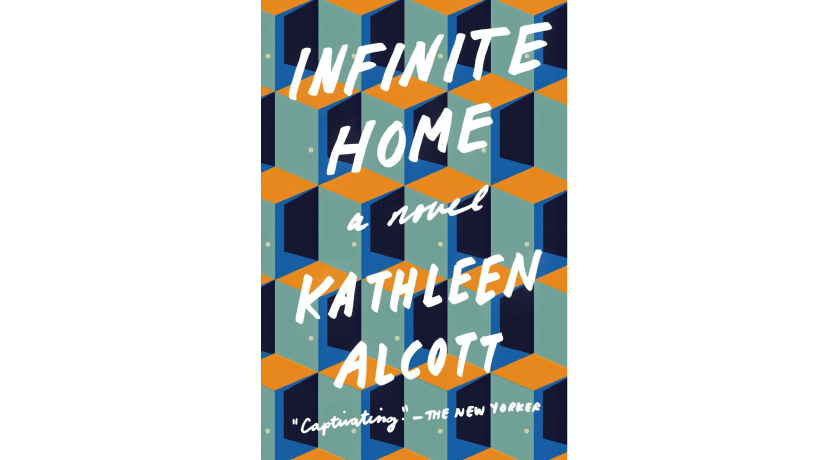As a writing exercise, I was once told to pick someone in the room and describe them — what they wore, what they looked like, how they spoke, how they moved — and then to invent a “why” for each observation. Why is he wearing that shirt? Because he keeps forgetting to do laundry and this was the last shirt that didn’t smell rancid. Why does he keep running his right hand through his hair? Because for the last three weeks he’s been constantly arguing with his friend, Lily, and yesterday night they were at it again, but this time they happened to be yelling at each other outside the home of a crotchety old witch who cast a spell that caused them to switch bodies; so he is actually Lily right now, and she’s always had long hair and can’t get used to the feeling of his short locks ending just below his ears. It was an incredible exercise, and ever since completing it, I have been fascinated by the art of character building, and the level of understanding of what makes people tick that is required to create a realistic character.
In my mind, one of the greatest skills an author can master is the ability to create a character so realistic, so believable, that they begin to exist outside of the story for which they were invented. So imagine the surge of pure delight I felt when I happened across Kathleen Alcott’s Infinite Home — a novel that hosts not one, but six characters who transcend the confines of the page by living lives that are free of the agenda of a traditional plot. Much like in our own lives, their actions are instead motivated by their individual growth, and the development of the characters around them.
Kathleen Alcott, who is also the author of The Dangers of Proximal Alphabets (as well as several short fictions, criticisms, memoirs, and food writings that have appeared in outlets such as The New York Times, The Guardian, and The New Yorker Online), takes the practice of telling a story from multiple points of view and shapes it into something new. Keep in mind, this is a technique that has appeared in literature as revered and old as “The Noble Tale of the Sangreal” of Sir Thomas Malory’s Le Morte d’Arthur (1485), and in scripts as mainstream and modern as Marvel’s Avengers: Infinity War (2018). The world is no stranger to multiple points of view. What makes Infinite Home unique is Alcott’s rejection of the conventional, plot-driven novel, and her intense focus on how her characters react to each other.
Infinite Home revolves around the lives and struggles of the tenants of a decrepit Brooklyn brownstone. It brings to life Thomas, a cardigan-wearing former artist who is coping with a post-stroke life as best as he can; Adeline, an agoraphobe and hoarder with a wit sharper than a knife and a soul as deep and full as an ocean; Paulie, a happy-go-lucky child in his mid-thirties with a diagnosis of Williams Syndrome; Claudia, Paulie’s devoted younger sister who struggles to remain composed on the outside while she’s unraveling on the inside; Edward, the damaged ex-comedian whose purpose in life was once to entertain the world; and Edith, their brazen landlady and friend whose age has begun a ruthless attack on her mind.
Each character receives roughly equal amounts of ‘screen time’ — except for Edith. Ironically, Edith is the most significant character of them all. In a novel that is driven by the development of such a wide array of characters, something has to be in the driver’s seat. That something is Edith’s dementia. While the rest of the characters are growing and leaning on each other to get through their individual struggles, Edith is rapidly descending to complete incompetence. Her worsening mental state is a unifying concern for the tenants, like a ticking time bomb that controls the fate of their homes and lives. Alcott expresses this by weaving Edith’s haze into the structure of the novel, which makes up for the lack of Edith’s perspective, and ensures that the reader never forgets about her.

The novel rapidly flips between the points of view of Edith and her tenants, never lingering on a single character for more than six pages and never indicating a switch except for with a page break, a decorative line, and a new first-letter format. When I first sat down to read Infinite Home, the constant change and lack of clarity was disorienting. Snippets of present lives and memories of the past flash by without warning. More than once I had to stop to remind myself of which person’s life I was dipping into at that moment. But the more I was yanked and shoved around, the more I started to understand these people. The rapid submersions into their pasts explain the ‘why’s’ of their presents. Why is Edward so gruff and cynical when he was once such a driven comedian? Because when they were children, he would entertain his younger brother while their parents kept them locked up in their dark house for days. Why is Claudia so uptight and why does she so dutifully fill the role of Paulie’s mother? Because their actual mother died many years before, and their father soon after. From the fast-paced river of detail quickly rose characters as tall as mountains.
At first, I wondered why Alcott didn’t slow the pace a bit, or at least add some chapter titles. Couldn’t she develop these characters just as well through a more standard form? Soon, I realized that no, no she could not — absolutely should not. Because this disorienting, fast-paced collision of past and present is, in itself, a manifestation of Edith’s character development. The lack of chapter titles or narrator labels express her confusion and struggle to remember who she is interacting with. The unannounced flashbacks and abrupt pulls back into the present represent her own inability to differentiate between moments of her life. The fast pace creates an environment of confusion and disorientation and fear that seeps from Edith, through the novel, and directly to the reader.
Alcott’s ability to not only use character development in the place of plot, but to also weave it into the overall structure of a novel so that it directly affects the reader is a remarkable feat that hinges directly on Alcott’s creation of realistic characters. The residents of Infinite Home rise from the page and invite the reader to take a seat in the corner of their musty apartments while they deal with the drama of the mundane. Just like in our own lives, there is no grand plot or purpose: any action depends solely on an individual and the circumstances of their life. Alcott has presented us with a set of people who have been all been affected by the aggressive onset of old age, and allowed us to observe their responses.
This realism is what makes Infinite Home appealing. This is what makes it for those of us who beg for accurate representations of the mundane and genuinely flawed on the page. And for those of us who wonder why someone dresses like that, looks like that, speaks that way, moves that way. But the way Alcott presents this realism — the rejection of conventional plot and form, the omnipresence of Edith’s dementia — this is what makes Infinite Home unique. This is what makes it for those of us who crave something new, something remarkable. This is why I’ve reserved a special place in my heart for Infinite Home, right along Little Women and all the novels, short stories, films, and television series like it.

